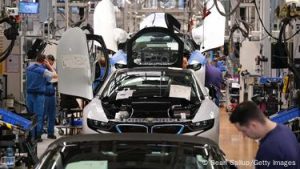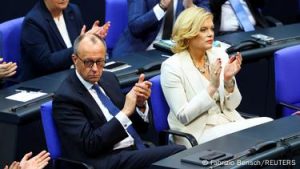Unemployment in Germany rose by 26,000 — the sharpest monthly increase since October 2024. The figure far exceeds analysts’ expectations of an increase of 10,000.

Germany’s labor market showed new signs of stress as unemployment rose sharply in March, marking the steepest monthly increase since October 2024.
The number of jobless individuals rose by 26,000 in seasonally adjusted terms, bringing the total to 2.92 million, the Federal Labor Office reported on Friday. The figure more than doubled analysts’ forecasts of an increase of 10,000.
The seasonally adjusted unemployment rate climbed to 6.3%, up from 6.2% the previous month — also slightly above market predictions.
Spring recovery slowed by economic troubles
“March marks the start of the so-called spring recovery on the labor market. This year, however, the economic slump is noticeably slowing it down,” said Andrea Nahles, the head of the Federal Employment Agency.
Germany, which has now experienced two consecutive years of economic contraction, is still grappling with persistent weaknesses, especially in industrial output.
The Labor Office reported that the number of job vacancies had declined sharply to 643,000 in March — 64,000 fewer than the same time last year — indicating a weakening demand for workers.
Unemployment has remained below the 3 million mark for the past decade, but current trends suggest this could soon change.
Auto industry struggles amid new US tariffs
Germany’s economic challenges are most visible in its key auto sector, where companies like Volkswagen are cutting jobs in response to falling demand.

Further pressure came this week after US President Donald Trump announced a 25% tariff on imported vehicles, a move expected to hit German manufacturers hard.
“Germany is in the immediate firing line,” Gaurav Ganguly, director of economic research at Moody’s Analytics, told Reuters news agency.
“If the policy remains in place, the consequences for consumer confidence and employment in the auto sector and beyond are severe,” he said.
Consumer sentiment shows minimal shift amid political uncertainty
A separate survey released on Friday showed that German consumer confidence remains largely unchanged heading into April.
According to the GfK market research institute and the Nuremberg Institute for Market Decisions (NIM), the consumer sentiment index inched up to -24.5 from -24.6 the previous month, falling short of the expected improvement to -22.7.
Despite minor gains in income expectations and purchasing sentiment, a growing tendency among households to save continues to suppress broader recovery.
“A fast formation of a government and the early adoption of a budget for this year would be an important factor for more planning security—not only for companies, but also for private households,” said Rolf Buerkl of NIM.
Government formation underway as economy seeks direction
Germany’s conservative bloc, led by Friedrich Merz, is currently engaged in coalition talks with the Social Democrats.

Both sides are aiming to form a government by or shortly after Easter, though key disagreements — including on immigration —remain unresolved.
Last week, Germany’s parliament approved a major fiscal overhaul and the largest spending package in its postwar history, aimed at revitalizing the sluggish economy and boosting defense spending. Yet economists warn that any recovery is unlikely to be immediate.
DW News


